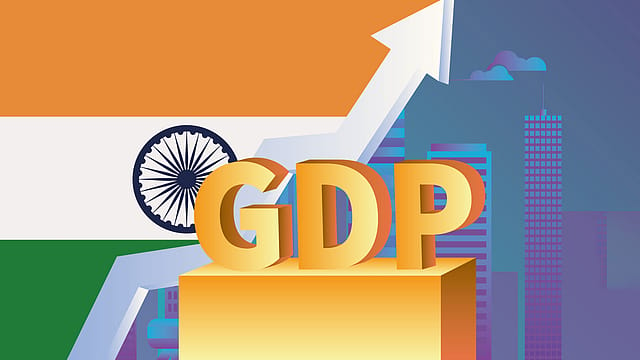RBI MPC meeting: India’s GDP to grow at 6.7% in FY26
ADVERTISEMENT

The Reserve Bank of India’s (RBI’s) monetary policy committee forecasts India’s gross domestic product (GDP) to grow at 6.7% in the financial year 2025-26.
As per the first advance estimates, real GDP growth for the current financial year (FY25) is estimated at 6.4%, a softer expansion after a robust 8.2% growth last year.
Going forward, the monetary policy committee expects economic activity to improve in the coming year. “Agricultural activity remains upbeat on the back of healthy reservoir levels and bright rabi prospects. Manufacturing activity is expected to recover gradually in the second half of this year and beyond. Early corporate results for Q3 indicate a mild recovery in the manufacturing sector,” forecasts RBI’s MPC.
On the demand side, rural demand continues to be on an uptrend, while urban consumption remains subdued with high-frequency indicators providing mixed signals, it says. “Improving employment conditions, tax relief in the Union Budget, and moderating inflation together with healthy agricultural activity bode well for household consumption,” the MPC predicts.
January 2026
Netflix, which has been in India for a decade, has successfully struck a balance between high-class premium content and pricing that attracts a range of customers. Find out how the U.S. streaming giant evolved in India, plus an exclusive interview with CEO Ted Sarandos. Also read about the Best Investments for 2026, and how rising growth and easing inflation will come in handy for finance minister Nirmala Sitharaman as she prepares Budget 2026.
Fixed investment is expected to recover, supported by higher capacity utilisation levels, healthy balance sheets of financial institutions and corporates, and Government’s continued emphasis on capital expenditure, it says.
However, headwinds from geo-political tensions, protectionist trade policies, volatility in international commodity prices and financial market uncertainties, continue to pose downside risks to the outlook, it cautions. Taking all these factors into consideration, MPC forecasts real GDP growth for 2025-26 at 6.7% with Q1 at 6.7%; Q2 at 7%; and Q3 and Q4 at 6.5% each.
The global economic backdrop remains challenging, RBI governor Sanjay Malhotra says, adding that the global economy is growing below the historical average. “With receding expectations on the size and pace of rate cuts in the US, the US dollar has strengthened and bond yields have hardened. Emerging Market Economies (EMEs) have witnessed large capital outflows, leading to sharp depreciation of their currencies and tightening of financial conditions. Divergent trajectories of monetary policy across advanced economies, lingering geopolitical tensions and elevated trade and policy uncertainties have exacerbated financial market volatility. Such an uncertain global environment has posed difficult policy trade-offs for EMEs,” Malhotra says in his first monetary policy statement.
Headline inflation softened sequentially in November-December 2024 from its recent peak of 6.2 per cent in October. The moderation in food inflation, as vegetable price inflation came off from its October high, drove the decline in headline inflation. Core inflation remained subdued across goods and services components and the fuel group continued to be in deflation.
On inflation, the MPC says food inflation pressures should see a significant softening due to good kharif production, winter-easing in vegetable prices and favourable rabi crop prospects. Core inflation is expected to rise but remain moderate, it says. “Continued uncertainty in global financial markets coupled with volatility in energy prices and adverse weather events presents upside risks to the inflation trajectory. Taking all these factors into consideration, CPI inflation for 2024-25 is projected at 4.8% with Q4 at 4.4%. Assuming a normal monsoon next year, CPI inflation for 2025-26 is projected at 4.2%,” forecasts the monetary policy committee.
